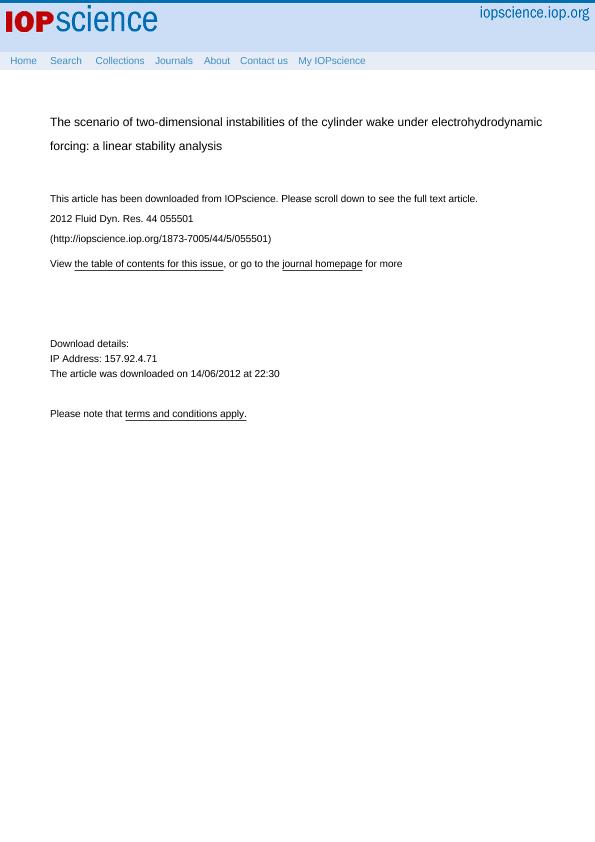Artículo
The scenario of two-dimensional instabilities of the cylinder wake under electrohydrodynamic forcing: A linear stability analysis
Fecha de publicación:
06/2012
Editorial:
IOP Publishing
Revista:
Fluid Dynamics Research
ISSN:
0169-5983
Idioma:
Inglés
Tipo de recurso:
Artículo publicado
Clasificación temática:
Resumen
We propose to study the stability properties of an air flow wake forced by a dielectric barrier discharge (DBD) actuator, which is a type of electrohydrodynamic (EHD) actuator. These actuators add momentum to the flow around a cylinder in regions close to the wall and, in our case, are symmetrically disposed near the boundary layer separation point. Since the forcing frequencies, typical of DBD, are much higher than the natural shedding frequency of the flow, we will be considering the forcing actuation as stationary. In the first part, the flow around a circular cylinder modified by EHD actuators will be experimentally studied by means of particle image velocimetry (PIV). In the second part, the EHD actuators have been numerically implemented as a boundary condition on the cylinder surface. Using this boundary condition, the computationally obtained base flow is then compared with the experimental one in order to relate the control parameters from both methodologies. After validating the obtained agreement, we study the Hopf bifurcation that appears once the flow starts the vortex shedding through experimental and computational approaches. For the base flow derived from experimentally obtained snapshots, we monitor the evolution of the velocity amplitude oscillations. As to the computationally obtained base flow, its stability is analyzed by solving a global eigenvalue problem obtained from the linearized Navier-Stokes equations. Finally, the critical parameters obtained from both approaches are compared.
Palabras clave:
Flow control
Archivos asociados
Licencia
Identificadores
Colecciones
Articulos(SEDE CENTRAL)
Articulos de SEDE CENTRAL
Articulos de SEDE CENTRAL
Citación
D'adamo, Juan Gastón Leonel; González, Leo M.; Gronskis, Alejandro; Artana, Guillermo Osvaldo; The scenario of two-dimensional instabilities of the cylinder wake under electrohydrodynamic forcing: A linear stability analysis; IOP Publishing; Fluid Dynamics Research; 44; 5; 6-2012; 1-20
Compartir
Altmétricas




